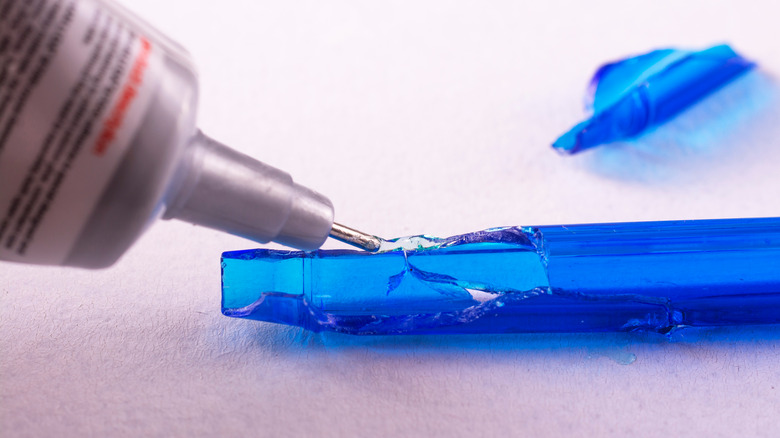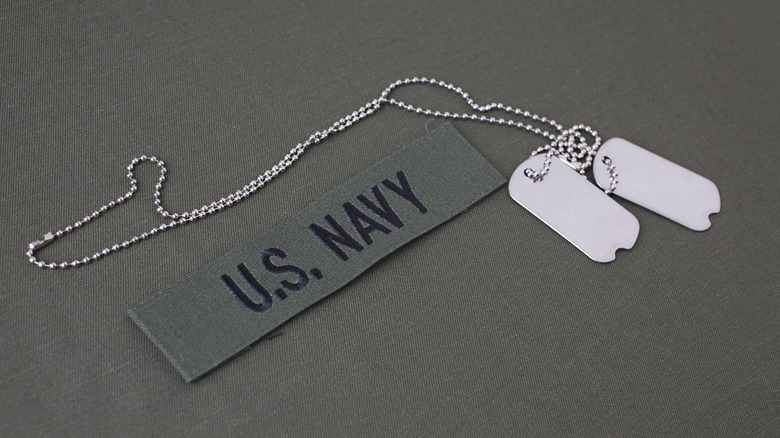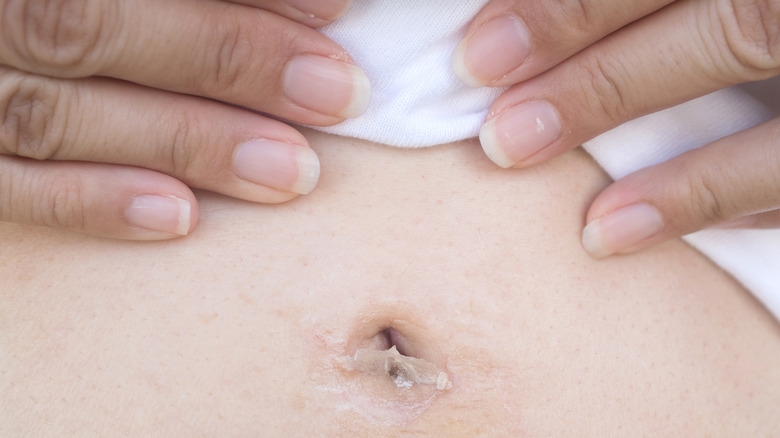The Genius Way Super Glue Was Used In The Vietnam War
The first incarnation of Super Glue was discovered during World War II by Harry Wesley Coover Jr., a young chemist working for Kodak laboratories, according to The New York Times. Coover was attempting to use acrylates — the substance in Super Glue, or more specifically cyanoacrylates — to make gunsights, but he couldn't get around them sticking to everything in the laboratory. In one experiment, one of Coover's understudies accidentally stuck two $3,000 refractometer lenses together. But instead of getting angry, Coover realized the potential of the substance they had discovered and patented it (via The New York Times).
Later, Coover debuted his invention on the television show "I've Got a Secret," a comedy show in which a group of panelists tries to guess that episode's guest's secret. After Coover's "secret" was revealed, the judges asked him to prove it. So, Coover administered the Super Glue between pieces of metal that hung from the ceiling. Then he was lifted through the air, holding on to one piece of metal. The host even played into the demonstration, jumping on with Coover to show the strength of the invention (via The New York Times).
The multiple uses of Super Glue
Harry Coover Jr. would go on to hold 460 patents before he died in 2011, according to The New York Times. The year before his death, President Barack Obama honored "Mr. Super Glue" with the National Medal of Technology and Innovation. As a staple of most U.S. homes, Super Glue, also known as Krazy Glue or its chemical name cyanoacrylate glue, can help repair tools, toys, and appliances.
According to The New York Times, Super Glue was even used by medics in the Vietnam War to close up battle wounds suffered by soldiers when stitching or surgery wasn't immediately available. In his obituary in The New York Times, Coover's daughter said that the fact that one of his inventions saved many soldiers in the Vietnam War from bleeding out was one of his proudest achievements.
Today, Super Glue can be used to seal up small cuts and wounds as well, although studies show that it can also "irritate the skin, kill cells, and cause other side effects, particularly when used on deep wounds," per The New York Times.
Inspiring medical treatments
Harry Coover Jr. and his team at Kodak saw the potential for Super Glue to be used as a skin sealant early on, according to Straight Dope. In 1964, the company submitted an application to the Food and Drug Administration, which decides which inventions can be used for medical treatment. The first version of Super Glue technically contained a compound called methyl-2-cyanoacrylate, which really irritated the skin. Later, another version was released that included less toxic compounds like butyl-2-cyanoacrylate, but it fell apart after a few days' use, per Straight Dope.
Eventually, a medical-specific application was designed with 2-octyl-cyanoacrylate, which was approved by the FDA in 1998. Today, you may have seen this formulation on the pharmacy shelf as Dermabond.
Other products with slight variations have been developed based on Coover's initial invention, like Soothe-n-Seal in dental work and Nexaband for pets. In a small vial, Liquid Bandage can be used to seal wounds with a similar formulation (via Straight Dope).


